Vladivostok in the USSR
 Bashny.Net
Bashny.Net
History of Vladivostok began July 2, 1860, when 28 soldiers under the command of Ensign Nikolai Komarov landed the Golden Horn Bay. In Soviet times, Vladivostok was a closed naval base and an outpost of the country in the Pacific. To get to town, it was necessary to have a special pass.
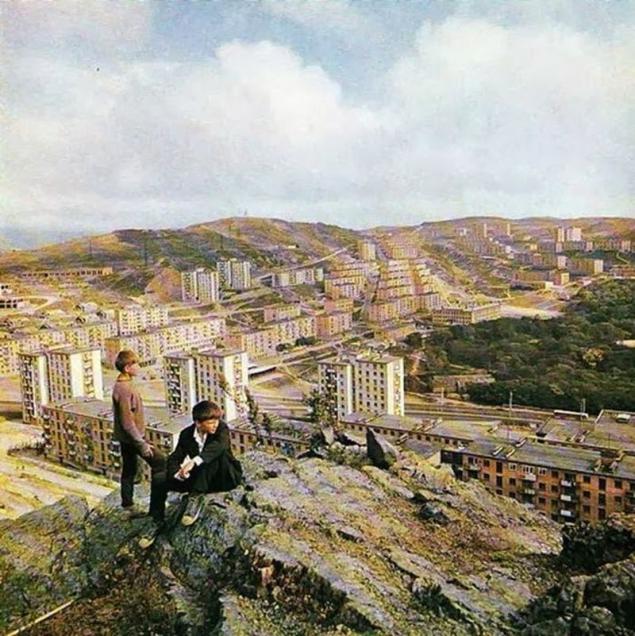
During the Soviet era in the 60s and 70s in Vladivostok began large-scale construction of housing, which is particularly intensified after the visit to Vladivostok Nikita Khrushchev in 1959. This time, called the "heyday" of Vladivostok.
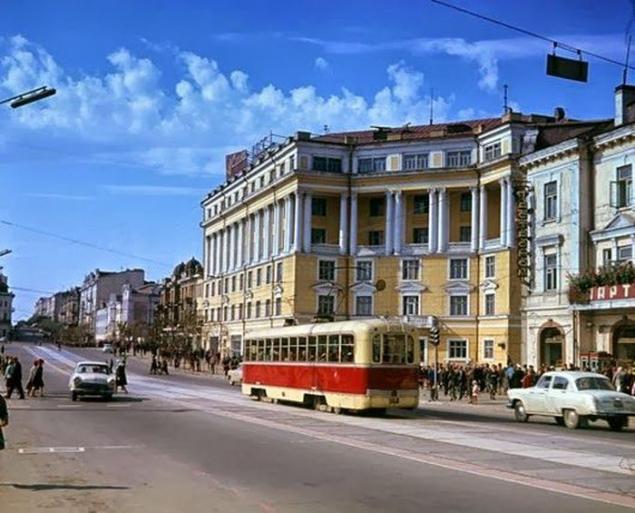
After Nikita Khrushchev's visit to Vladivostok in 1959 the city began to develop rapidly, there are new buildings and monuments.
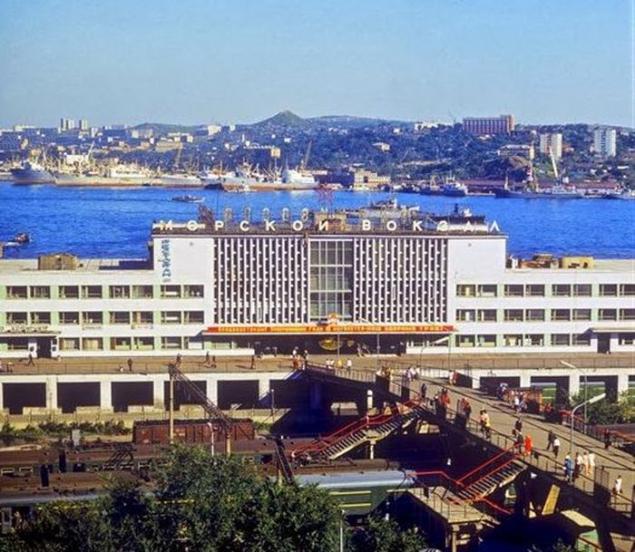
A lot of attention to the "heyday" of Vladivostok was given to the appearance of the city: in these years there are more parks and lawns.
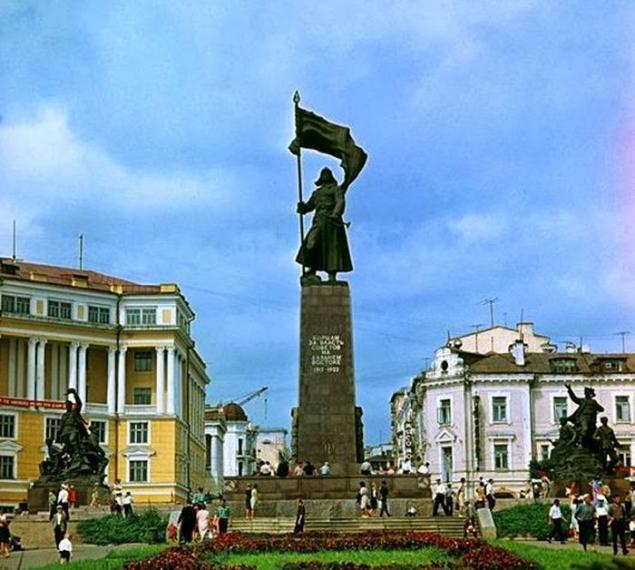
During these years, Vladivostok was a state program "Big Vladivostok", which is also reflected in the development of the transport network of the city.
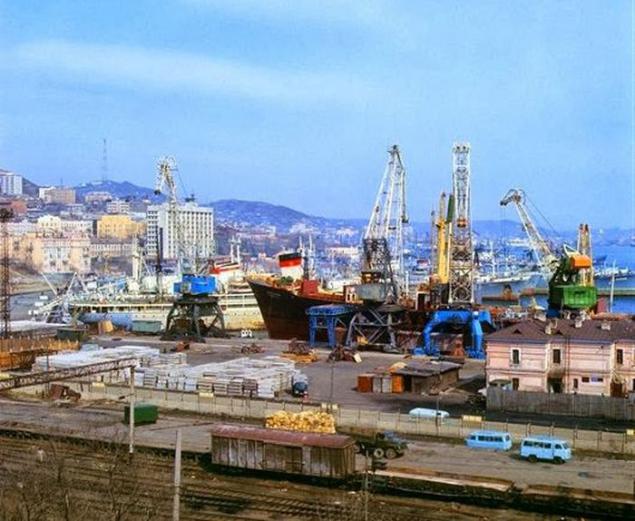
Vladivostok was considered a national basis the whaling, krabolovnogo, fishing and reefer fleet.
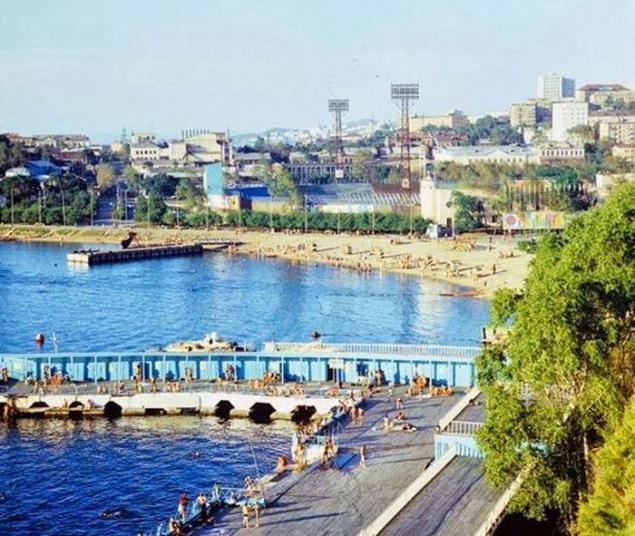
Many buildings are now considered landmark Vladivostok, were built during the Soviet era.
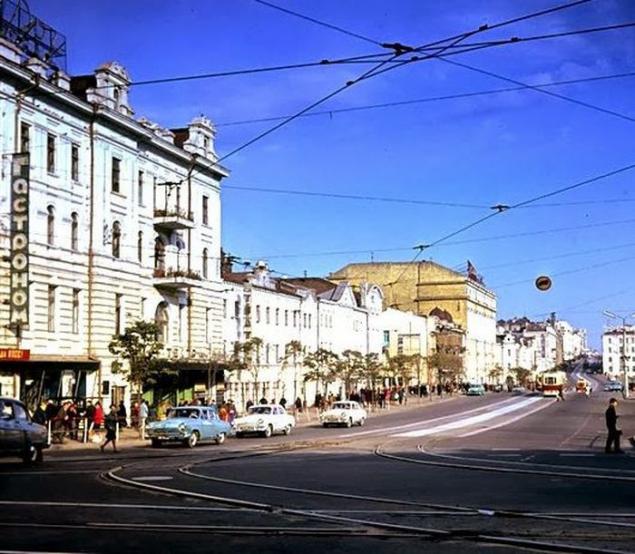
At the same time, "new life" and received the old buildings, among them - the train station.

However, not all old buildings were used for the original purpose: for example, during the Soviet era the city Lutheran church became a museum of the Pacific Fleet.
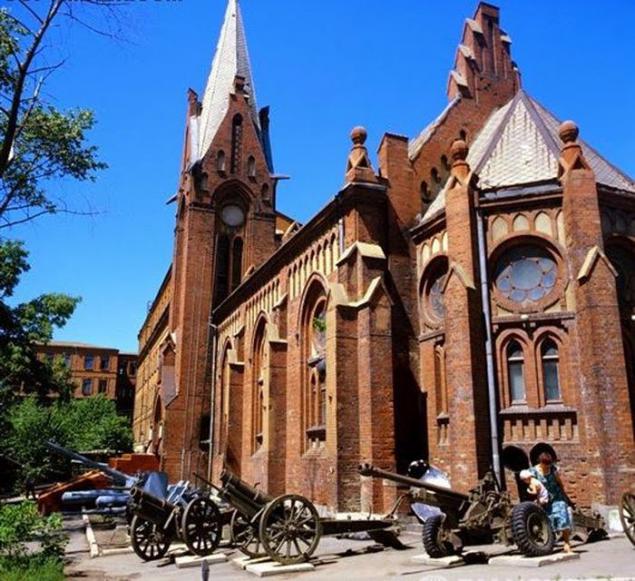
Nevertheless, residents of Vladivostok known as the 60s and 70s "heyday" of the city, as it is here, then there are many new streets and entire neighborhoods.

The monument to the fighters for Soviet power in the Far East, to which marching column topped by a red flag of the workers. On the right, toward the deep sea and the train station out Aleut - one of the oldest streets in the city.

Monument to Lenin, set opposite the train station in November 1930.
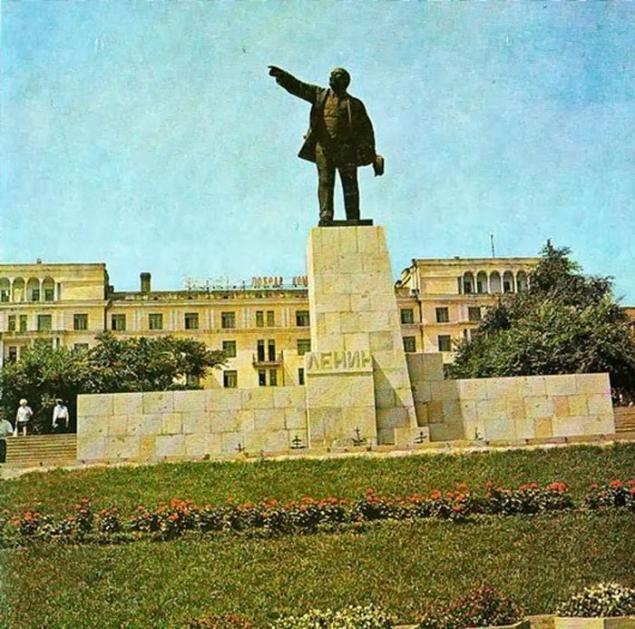
A minute of silence on Lenin Street (now her historical name Svetlanskaya) on the anniversary of the Victory Day. The photo was taken right in front of the monument to the fighters for Soviet power, as shown in the first picture. Far away Ocean Avenue.
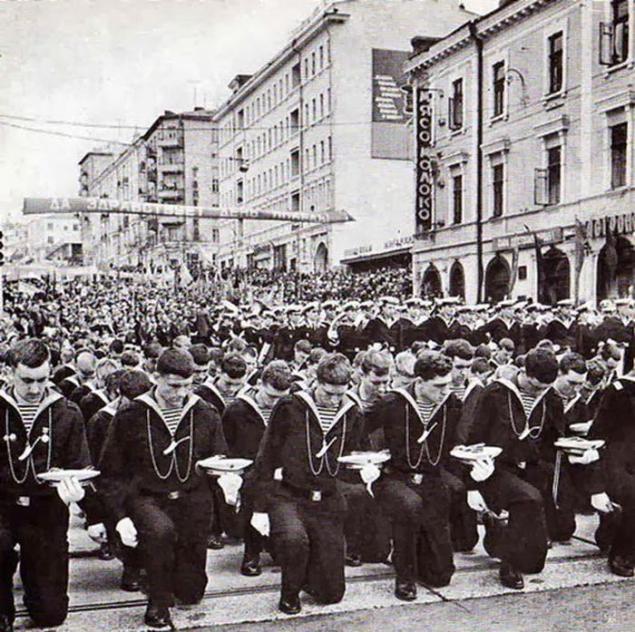
Very beautiful building regional committee of the CPSU. Left takes away the prospect of Lenin, and if just left down toward the waterfront, you can go out to the Eternal Flame.

But Vladivostok - is, of course, also a major seaport, the book could not ignore.
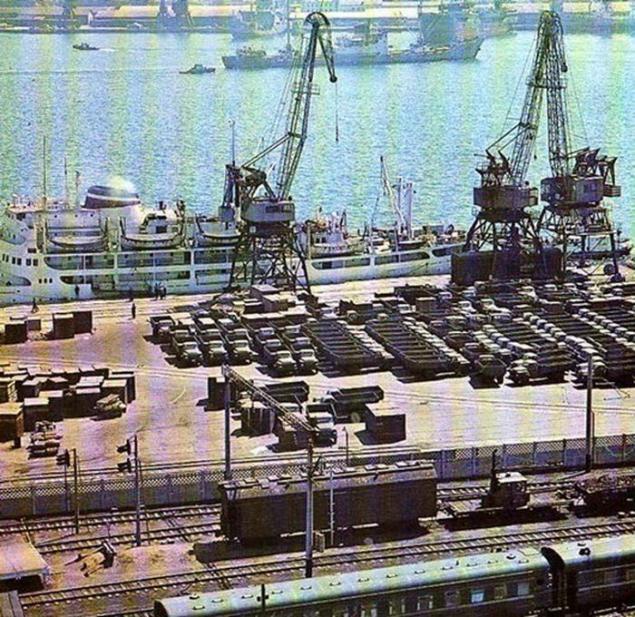
Famous Pacific crab. In Soviet times, the supply of products and consumer goods was much more generous here: after all, a closed city.

Golden Horn Bay.
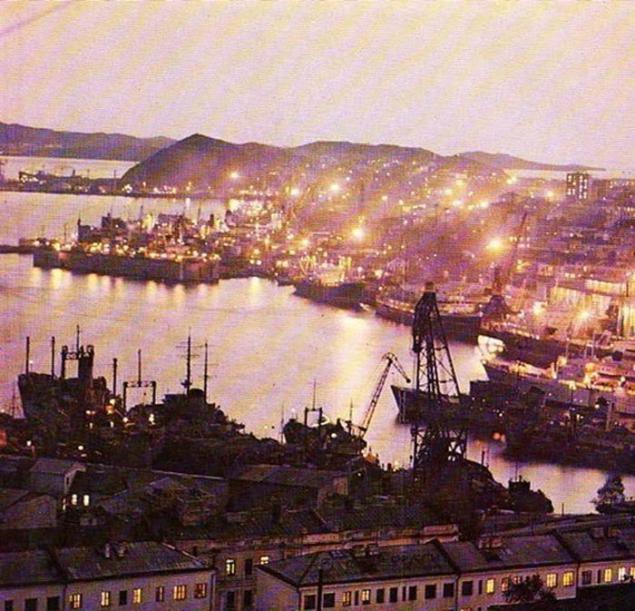
In the foreground creeps up the funicular, connecting the foot of the hill with its apex. Below you can see the Lutheran church and the old building FESTU.

In those years, the Lutheran church was a museum of the history of the Pacific Fleet. Now Lutheran Church returned to the Lutheran community.

City Beach at the sports harbor. Book optimistic comments exclaims: "Is not it Copacabana?" On the left stands the building of the cinema "Ocean».
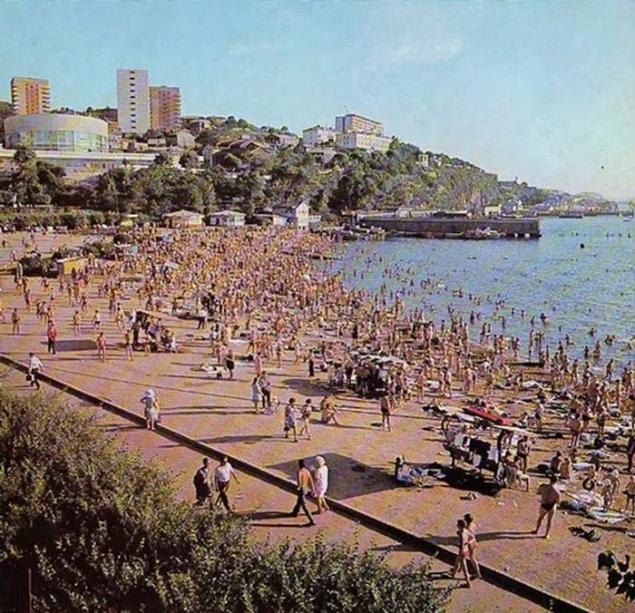
Far away built "Khrushchev" Patrice Lumumba Street (now the Admiral Yumashev). On the left you can see the still unfinished Dalrybvtuz.

I must say, plenty enough faceless boxes able to diminish the aesthetic component to run up the hill terraces. Unfortunately, the old architecture in pictures hardly appears.
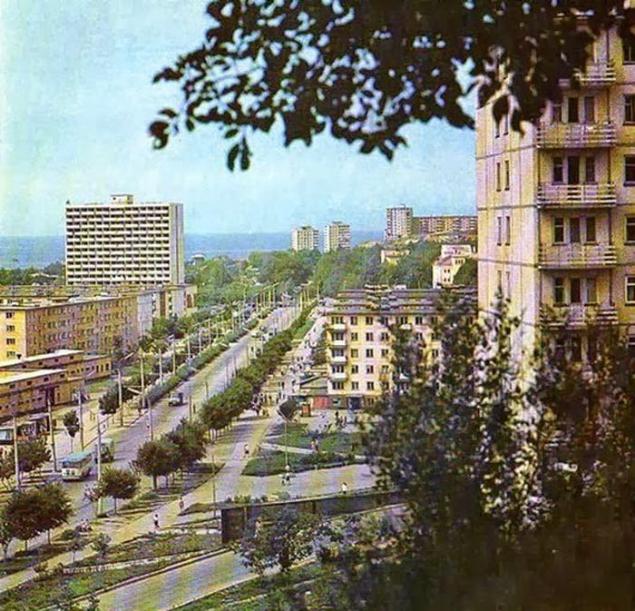
Sukhanov Street, named in honor of one of the first chairmen of the Bolshevik city council Vladivostok.
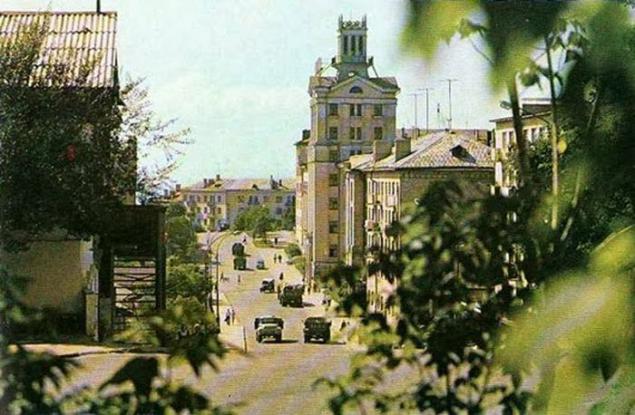
The pipeline at the "Radio set."
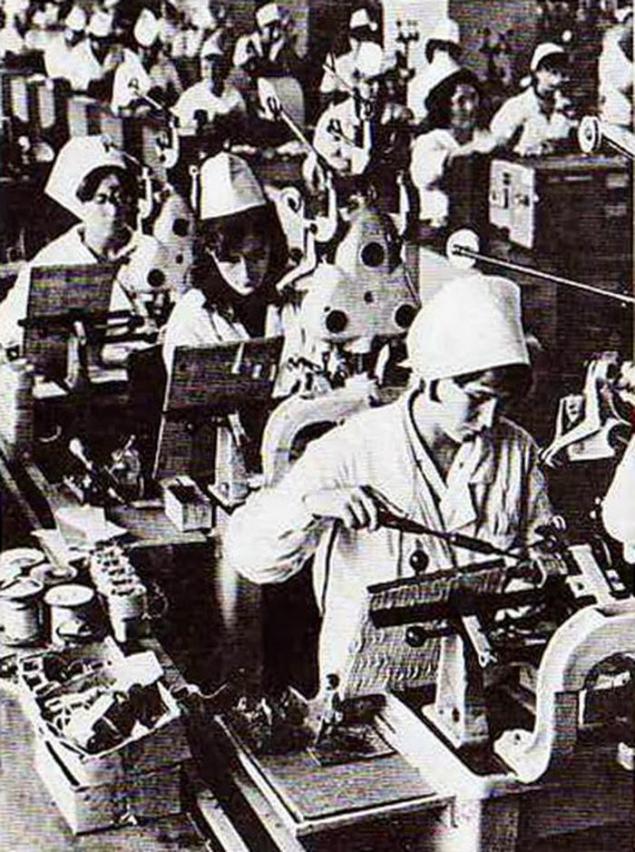
Football match at the stadium "Dynamo". Behind the gate you can see the most interesting area of the historic district of the city - Millionka. It's kind of a sister of the famous Moscow Vladivostok Khitrovka.

The exhibition of service dogs in the stadium "Avangard".

The demonstration on 7 November.
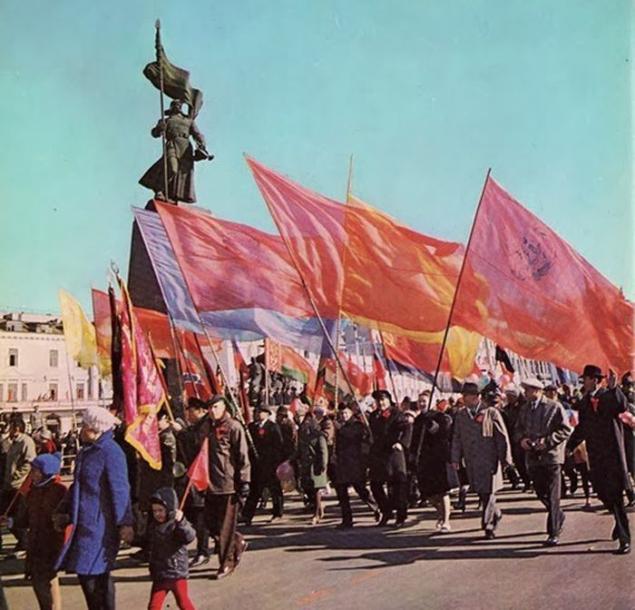
Laying wreaths at the main square of Vladivostok.

A tireless discoverer of the new NM Przewalski during his stay in Vladivostok hunted in the suburbs in the Axis - sika deer. Now Vladivostok know: the city is rapidly growing in breadth, prettier. There are new districts, equipped with modern amenities center. About 50 thousand citizens celebrated the house-warming in recent years.
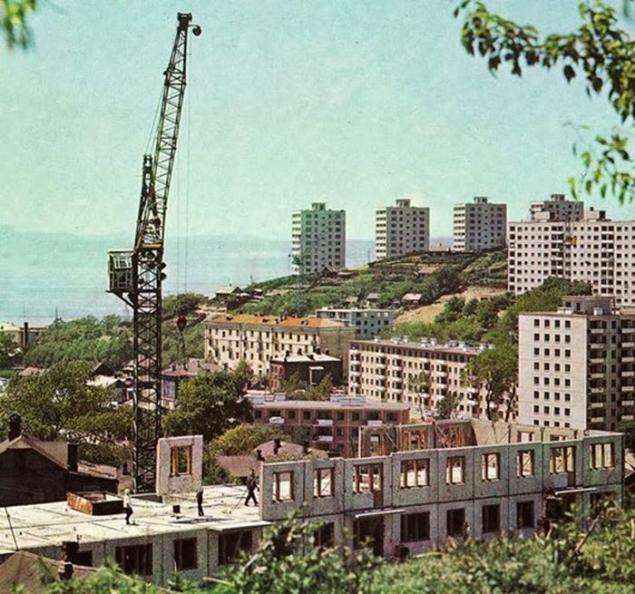
In our view, the construction of Soviet times, especially the second half of XX century, the city is not especially adorned. But it is, perhaps, the taste and color ...

In their apartments settlers through the "Orbit" watching television Moscow, Vladivostok transmit television studio and listen to stories that sound from the city houses the radio (thank bottom).

Mechanical factory existed in the city before the revolution. But only now it has become a truly powerful enterprise.
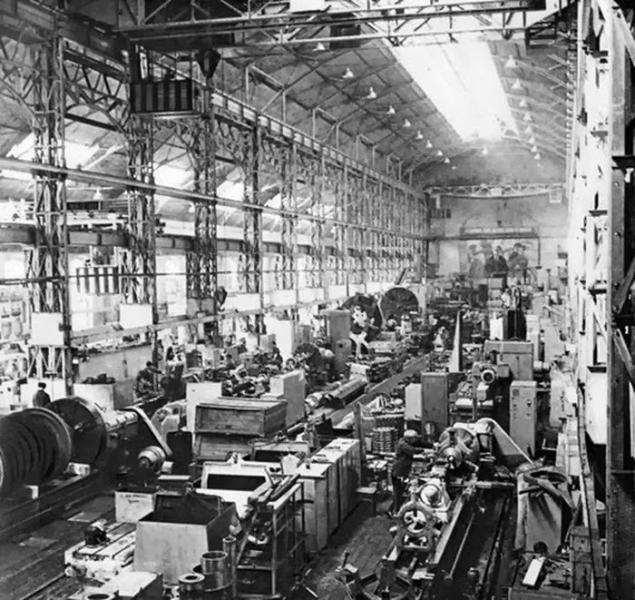
Fishing saury which beckon in the network of high-power light bulbs.

Three heroes. Sure, it's floating plants that bring ashore a ready-made fish products, mostly canned.

People on the table in 1970, fishermen may edge "filed" 165 million cans of canned fish.
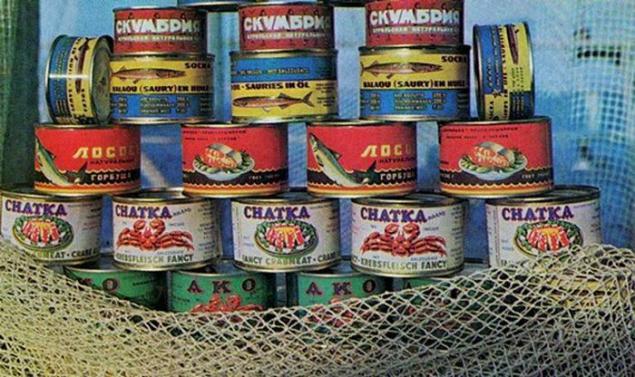
Vladivostok, like all Soviet cities, interesting lives, full-blooded, bright. Flowers are particularly fond of the city. They need a lot: after all, someone goes in flight, someone on the contrary, returning from a voyage.
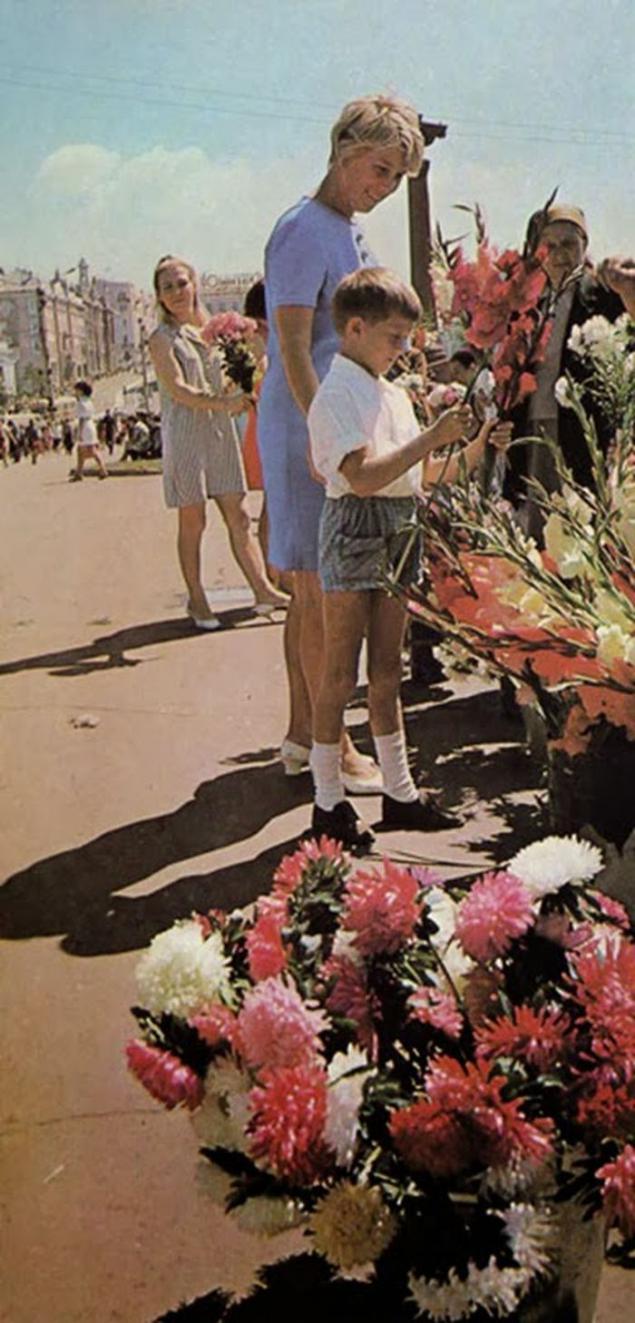
The ocean liner "Soviet Union" takes on a sea voyage with tourists.

"The construction of the first stage of a deepwater port in the Far East, near Nakhodka ..." - it is written in the Directives of the XXIV Congress of the CPSU. The Wrangel Bay started the construction of the country's largest deep-water port, the first phase of which will come into operation in the current five-year plan ... Near the port began construction of a residential district of port workers and builders.
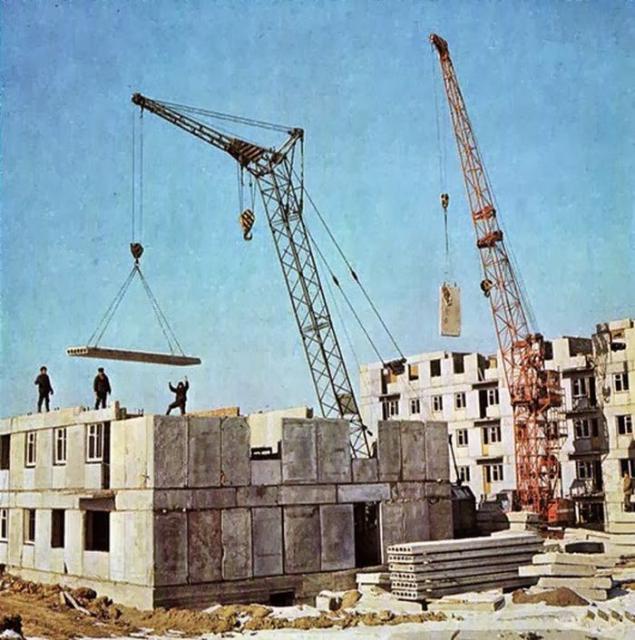
At the local fuel runs ArtemGRES, one of the main suppliers of electricity Primorye.

Ussuriisk, bus station.

Ussuriysk put on eternal parking locomotive E-629, which has become a memorial monument. On the plaque inscription: "In the furnace of the steam locomotive in May 1920 Whites and Japanese interventionists were burned fiery revolutionaries - fighters for the Soviet power in the Far East Sergey Lazo, Vsevolod Sibirtsev Alexei Lutsky."

Workers produce excellent fridges of Ussuriysk "Ocean".

The collective farm "Kommunar" - progressive economy of the Ussuri region. Clearly and quickly work combiners, is cleaning the loaves on the collective farms. But dinner still need ...

Small cement factory and a few handicraft workshops - that's the whole industry Spassky in 1917. After the expulsion kappelevtsy gangs Semenov and the new history of the city. In 1931, the Soviet government decided to build a powerful Spassk cement plant ... The team of the company whole family dynasty ... Here it is, the working Arsenenko dynasty.

Shmakovsky resort - the best in the Far East. Sanatorium named after the 50th anniversary of Soviet power.

Wood - industrial wealth of Primorye. Particularly large developments take place in the pool deep river Ussuri. The city erected Lesozavodsk Ussuri woodworking plant.
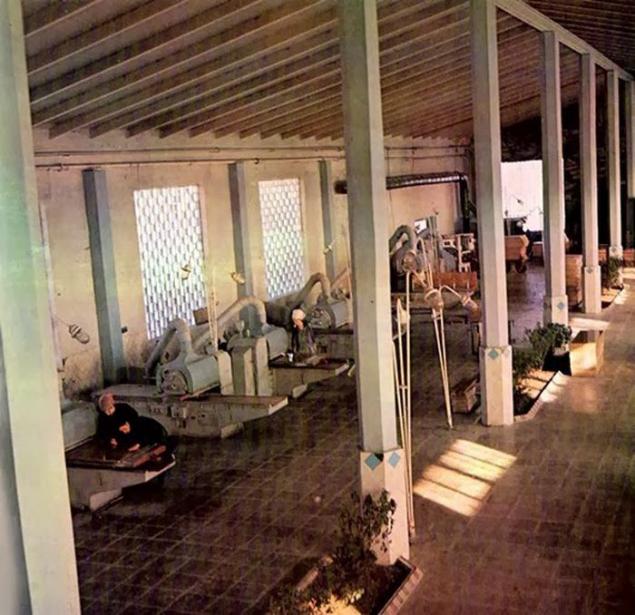
Arsenevtsy are proud that their city is the firstborn of aviation in the Far East. In fact, this statement is more than debatable, since aircraft building plant in Komsomolsk-on-Amur began building two years earlier than Arsenyevsky Aircraft Repair Plant №116. AN-14 with an affectionate name of "Bee" released by the "Progress". The plane solves the problem of establishing air links between settlements, non-equipped airfields. "Bee" is considered a celestial ATVs she sits on any site used for ryborazvedki.
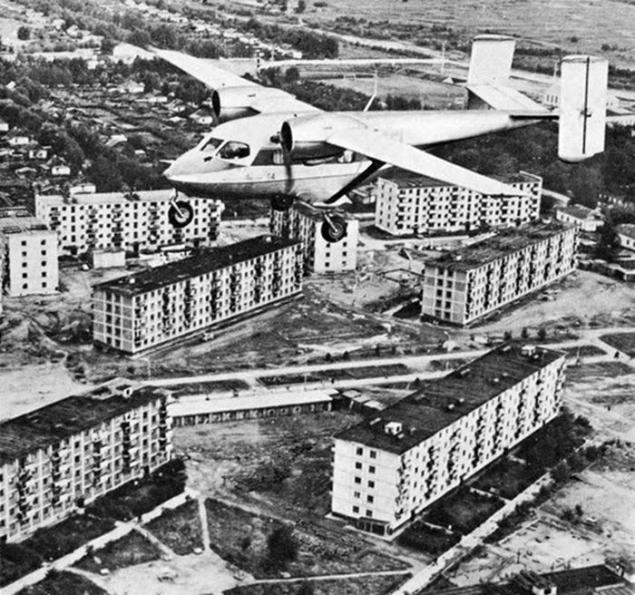
Arsenyev has the largest flying club in the Far East. Athletes are training gaps in gliders and aircraft of several types.

Work village Dalnegorsk - mining center of Primorye. Rightly asking old-timers: what Dalnegorsk town? Just look at the new, ninth residential area to verify the validity of the issue. By the way, Dalnegorsk still became a city only happened fifteen years later - in 1989.
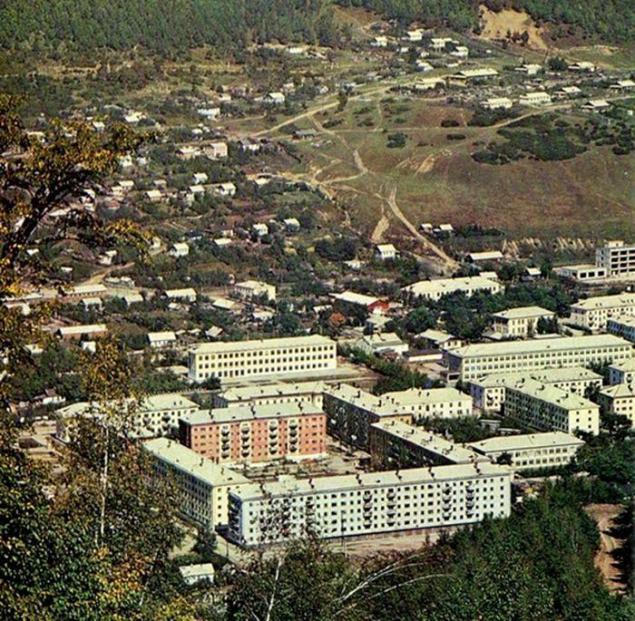
With Dalnegorsk pioneers at the monument to fallen partisans met a veteran of the Civil War PV Zakomoldin.

Along with the port and the city of Nakhodka increased.
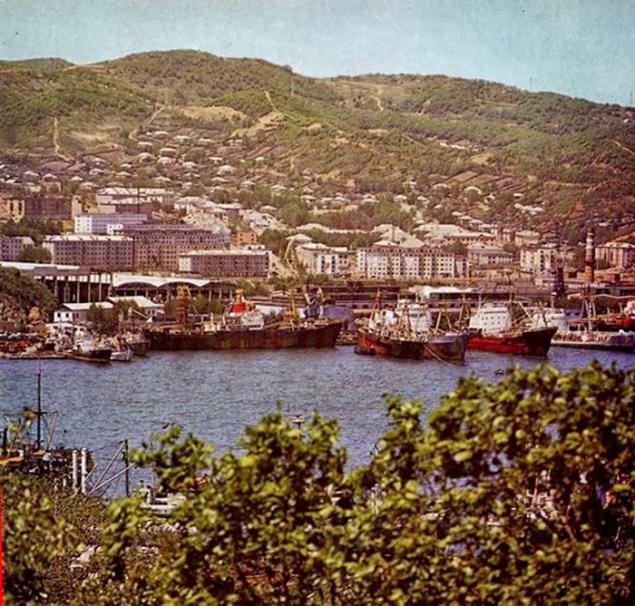
Partizansk - the city of glorious revolutionary traditions. Sacred memory of the fighters for Soviet power in Primorye. At the center of the partisan heroes obelisk-partisans who died during the Civil War.
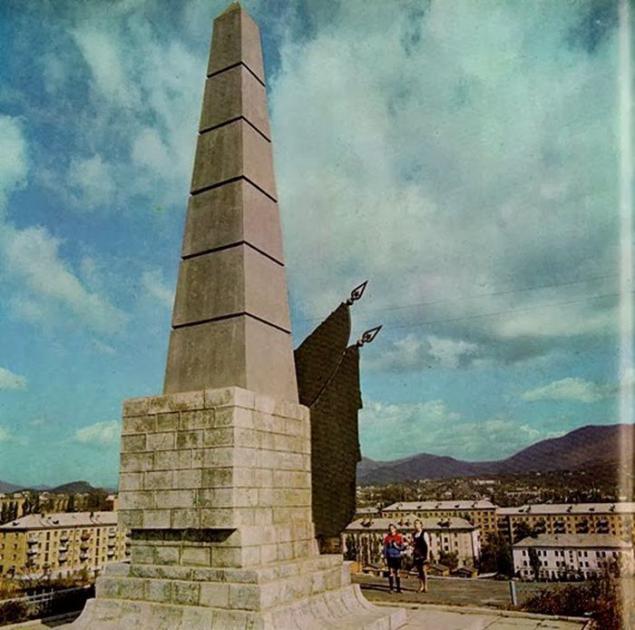
Dance Ensemble "Whirlwind" visiting sailors.
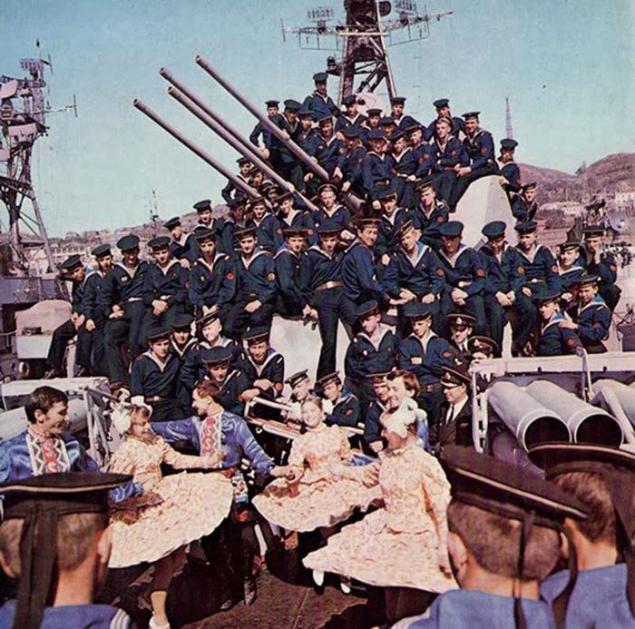
Source: ussrlife.blogspot.ru

During the Soviet era in the 60s and 70s in Vladivostok began large-scale construction of housing, which is particularly intensified after the visit to Vladivostok Nikita Khrushchev in 1959. This time, called the "heyday" of Vladivostok.

After Nikita Khrushchev's visit to Vladivostok in 1959 the city began to develop rapidly, there are new buildings and monuments.

A lot of attention to the "heyday" of Vladivostok was given to the appearance of the city: in these years there are more parks and lawns.

During these years, Vladivostok was a state program "Big Vladivostok", which is also reflected in the development of the transport network of the city.

Vladivostok was considered a national basis the whaling, krabolovnogo, fishing and reefer fleet.

Many buildings are now considered landmark Vladivostok, were built during the Soviet era.

At the same time, "new life" and received the old buildings, among them - the train station.

However, not all old buildings were used for the original purpose: for example, during the Soviet era the city Lutheran church became a museum of the Pacific Fleet.

Nevertheless, residents of Vladivostok known as the 60s and 70s "heyday" of the city, as it is here, then there are many new streets and entire neighborhoods.

The monument to the fighters for Soviet power in the Far East, to which marching column topped by a red flag of the workers. On the right, toward the deep sea and the train station out Aleut - one of the oldest streets in the city.

Monument to Lenin, set opposite the train station in November 1930.

A minute of silence on Lenin Street (now her historical name Svetlanskaya) on the anniversary of the Victory Day. The photo was taken right in front of the monument to the fighters for Soviet power, as shown in the first picture. Far away Ocean Avenue.

Very beautiful building regional committee of the CPSU. Left takes away the prospect of Lenin, and if just left down toward the waterfront, you can go out to the Eternal Flame.

But Vladivostok - is, of course, also a major seaport, the book could not ignore.

Famous Pacific crab. In Soviet times, the supply of products and consumer goods was much more generous here: after all, a closed city.

Golden Horn Bay.

In the foreground creeps up the funicular, connecting the foot of the hill with its apex. Below you can see the Lutheran church and the old building FESTU.

In those years, the Lutheran church was a museum of the history of the Pacific Fleet. Now Lutheran Church returned to the Lutheran community.

City Beach at the sports harbor. Book optimistic comments exclaims: "Is not it Copacabana?" On the left stands the building of the cinema "Ocean».

Far away built "Khrushchev" Patrice Lumumba Street (now the Admiral Yumashev). On the left you can see the still unfinished Dalrybvtuz.

I must say, plenty enough faceless boxes able to diminish the aesthetic component to run up the hill terraces. Unfortunately, the old architecture in pictures hardly appears.

Sukhanov Street, named in honor of one of the first chairmen of the Bolshevik city council Vladivostok.

The pipeline at the "Radio set."

Football match at the stadium "Dynamo". Behind the gate you can see the most interesting area of the historic district of the city - Millionka. It's kind of a sister of the famous Moscow Vladivostok Khitrovka.

The exhibition of service dogs in the stadium "Avangard".

The demonstration on 7 November.

Laying wreaths at the main square of Vladivostok.

A tireless discoverer of the new NM Przewalski during his stay in Vladivostok hunted in the suburbs in the Axis - sika deer. Now Vladivostok know: the city is rapidly growing in breadth, prettier. There are new districts, equipped with modern amenities center. About 50 thousand citizens celebrated the house-warming in recent years.

In our view, the construction of Soviet times, especially the second half of XX century, the city is not especially adorned. But it is, perhaps, the taste and color ...

In their apartments settlers through the "Orbit" watching television Moscow, Vladivostok transmit television studio and listen to stories that sound from the city houses the radio (thank bottom).

Mechanical factory existed in the city before the revolution. But only now it has become a truly powerful enterprise.

Fishing saury which beckon in the network of high-power light bulbs.

Three heroes. Sure, it's floating plants that bring ashore a ready-made fish products, mostly canned.

People on the table in 1970, fishermen may edge "filed" 165 million cans of canned fish.

Vladivostok, like all Soviet cities, interesting lives, full-blooded, bright. Flowers are particularly fond of the city. They need a lot: after all, someone goes in flight, someone on the contrary, returning from a voyage.

The ocean liner "Soviet Union" takes on a sea voyage with tourists.

"The construction of the first stage of a deepwater port in the Far East, near Nakhodka ..." - it is written in the Directives of the XXIV Congress of the CPSU. The Wrangel Bay started the construction of the country's largest deep-water port, the first phase of which will come into operation in the current five-year plan ... Near the port began construction of a residential district of port workers and builders.

At the local fuel runs ArtemGRES, one of the main suppliers of electricity Primorye.

Ussuriisk, bus station.

Ussuriysk put on eternal parking locomotive E-629, which has become a memorial monument. On the plaque inscription: "In the furnace of the steam locomotive in May 1920 Whites and Japanese interventionists were burned fiery revolutionaries - fighters for the Soviet power in the Far East Sergey Lazo, Vsevolod Sibirtsev Alexei Lutsky."

Workers produce excellent fridges of Ussuriysk "Ocean".

The collective farm "Kommunar" - progressive economy of the Ussuri region. Clearly and quickly work combiners, is cleaning the loaves on the collective farms. But dinner still need ...

Small cement factory and a few handicraft workshops - that's the whole industry Spassky in 1917. After the expulsion kappelevtsy gangs Semenov and the new history of the city. In 1931, the Soviet government decided to build a powerful Spassk cement plant ... The team of the company whole family dynasty ... Here it is, the working Arsenenko dynasty.

Shmakovsky resort - the best in the Far East. Sanatorium named after the 50th anniversary of Soviet power.

Wood - industrial wealth of Primorye. Particularly large developments take place in the pool deep river Ussuri. The city erected Lesozavodsk Ussuri woodworking plant.

Arsenevtsy are proud that their city is the firstborn of aviation in the Far East. In fact, this statement is more than debatable, since aircraft building plant in Komsomolsk-on-Amur began building two years earlier than Arsenyevsky Aircraft Repair Plant №116. AN-14 with an affectionate name of "Bee" released by the "Progress". The plane solves the problem of establishing air links between settlements, non-equipped airfields. "Bee" is considered a celestial ATVs she sits on any site used for ryborazvedki.

Arsenyev has the largest flying club in the Far East. Athletes are training gaps in gliders and aircraft of several types.

Work village Dalnegorsk - mining center of Primorye. Rightly asking old-timers: what Dalnegorsk town? Just look at the new, ninth residential area to verify the validity of the issue. By the way, Dalnegorsk still became a city only happened fifteen years later - in 1989.

With Dalnegorsk pioneers at the monument to fallen partisans met a veteran of the Civil War PV Zakomoldin.

Along with the port and the city of Nakhodka increased.

Partizansk - the city of glorious revolutionary traditions. Sacred memory of the fighters for Soviet power in Primorye. At the center of the partisan heroes obelisk-partisans who died during the Civil War.

Dance Ensemble "Whirlwind" visiting sailors.

Source: ussrlife.blogspot.ru
Tags
See also
To the Pacific Ocean on a motorbike - 2012
That hides the world ocean?
The Soviet Army (93 photos)
As a born military MAZ: hard work
Pierce for people in Chicago
As in the past, Russian answer to the insult foreigners (9 photos)
World - Pacific Theater of Operations (45 photos)
A matter of honor.
Calvary for gouging
Hatley Castle and its gardens
















